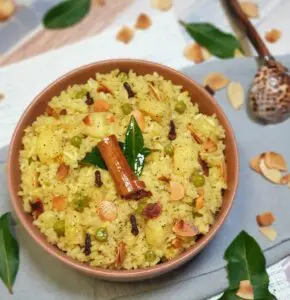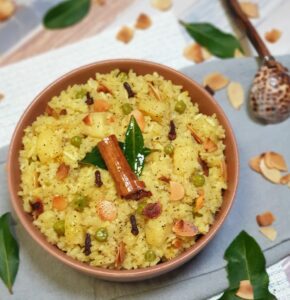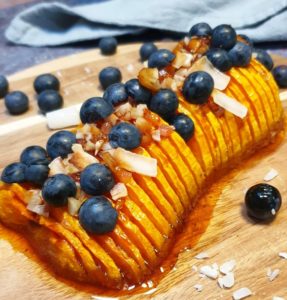It makes a lot of sense to preserve radishes so you can enjoy them at any time. Despite being quick and easy to grow, radishes don’t grow year-round in most climates. On top of that, oftentimes you’ll only want to use a little at a time. So it really does make sense to preserve them somehow, so you always have them on hand. Being able to preserve some of your harvest for later use is an important step towards self-sufficiency, and here we show you 3 different ways to make the most of your home-grown radishes.
Radishes are delicious when picked & eaten fresh. They have a delightful crunchy texture & peppery taste, plus their bright pink skins add visual interest to meals. Radishes support heart health and contain a wide variety of minerals, vitamins and other nutrients. These include vitamin C, antioxidants, fibre, selenium, potassium, calcium, iron and B vitamins. They are also part of the brassica family, a group of vegetables which are well-known for their detoxifying and cancer-fighting properties.
No matter which way you are going to preserve your radishes, they will need to be prepared first.
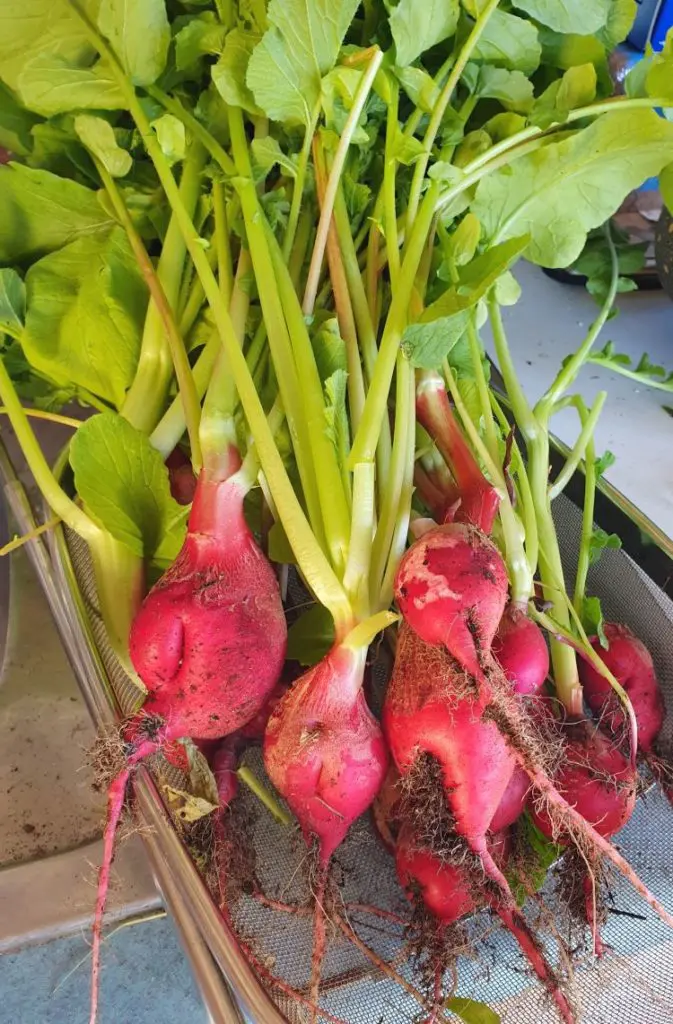

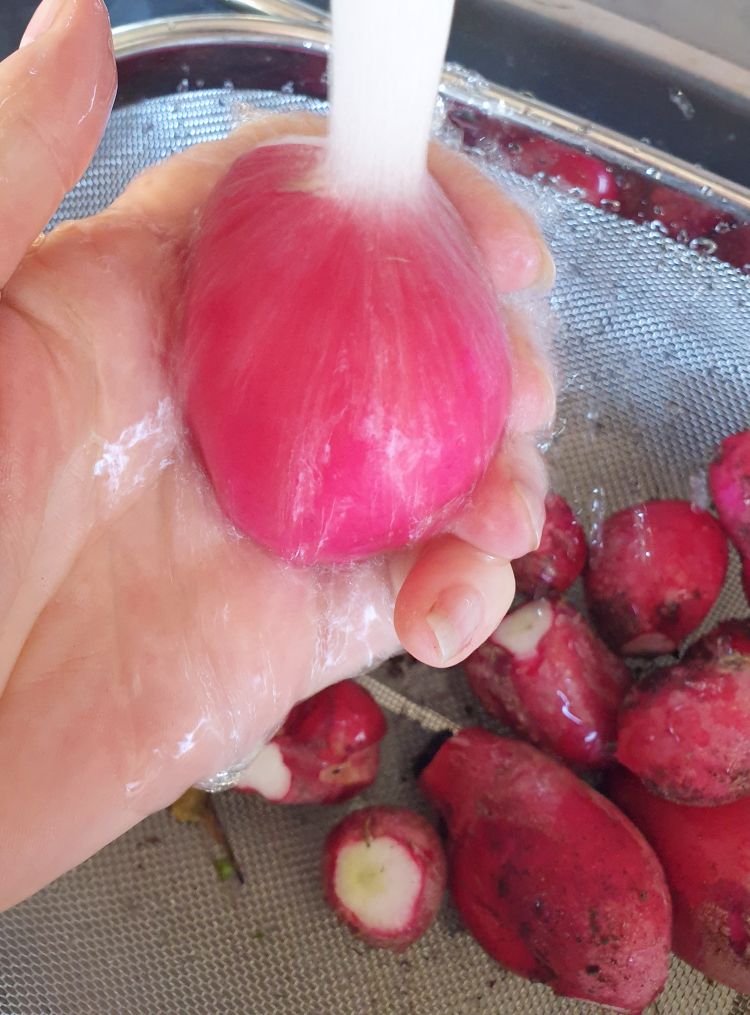
Start by harvesting the radish plants and shake off as much soil as possible. Harvesting the plants directly before preserving is best. Cut the tops and tails off (you can compost these) then wash them thoroughly. You may need to scrub them a little.

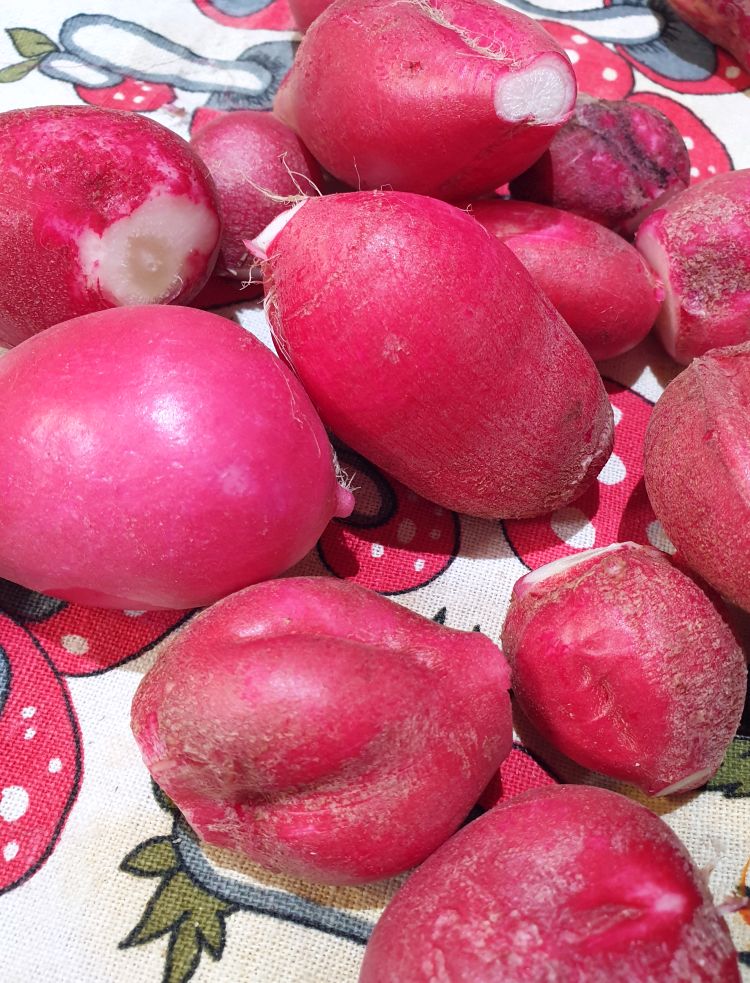

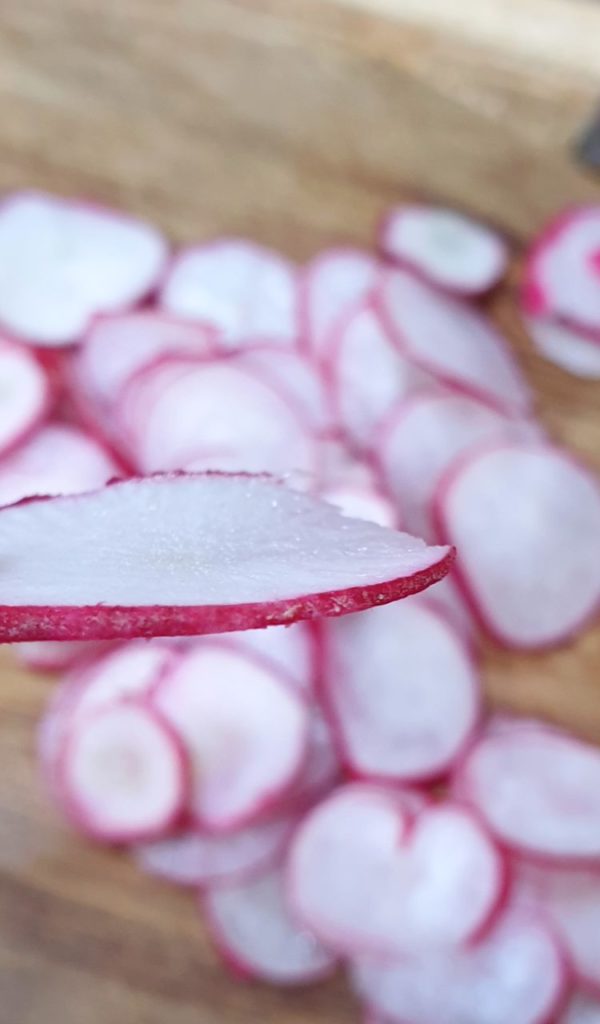
Dry the radishes then slice them thinly. A mandolin is the best thing to use if you have one, as they are very quick and give slices of a uniform thickness. Otherwise, do your best to cut thin slices with a sharp knife.
Dehydrated Radishes
Dehydrating is a really easy way to preserve radishes for later use. It simply involves removing all moisture by heating gently, and most fruits and veggies can be dehydrated for long-term storage. The dried product is then sealed in a labelled airtight container and stored in a cool, dark cupboard. Dehydrated radishes can be eaten as chips or added to stews and soups, and will last for up to 5 years if stored correctly.
Dehydrating can be done in an oven or in a dehydrator. Both methods work well, and neither will significantly change the flavour or shelf life of the food you’re drying. Dehydrators are great if you can get one- the cheap ones work perfectly well, so don’t feel that you need to spend a lot of money on one. They can reach lower temperatures than ovens, use less power, and dehydrate food more quickly.

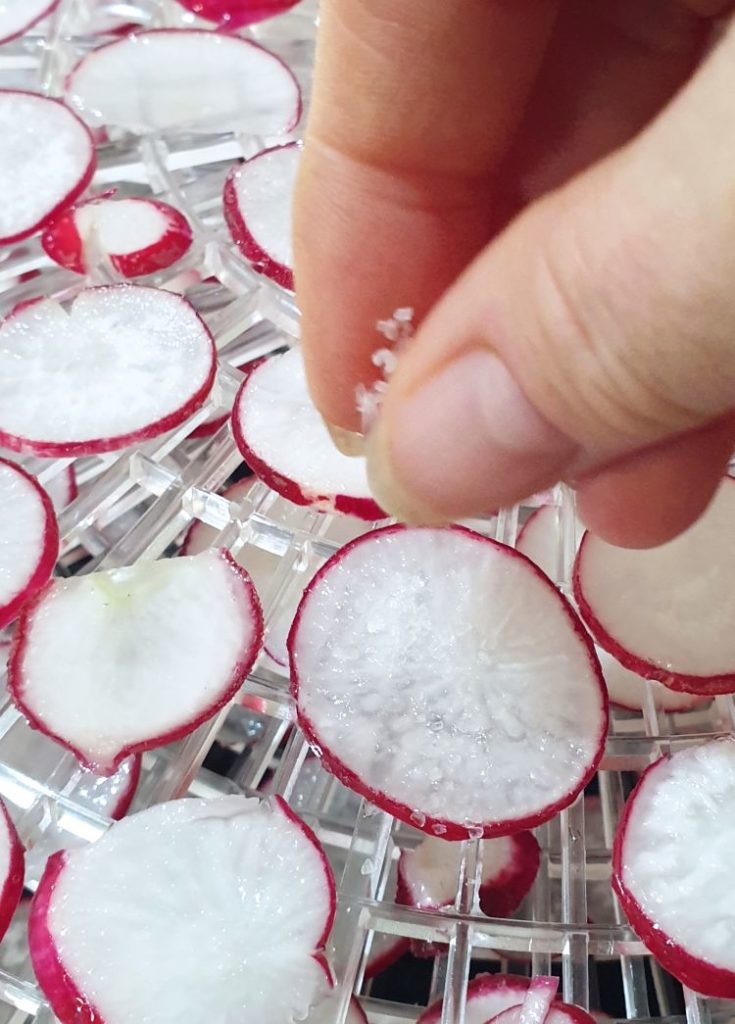

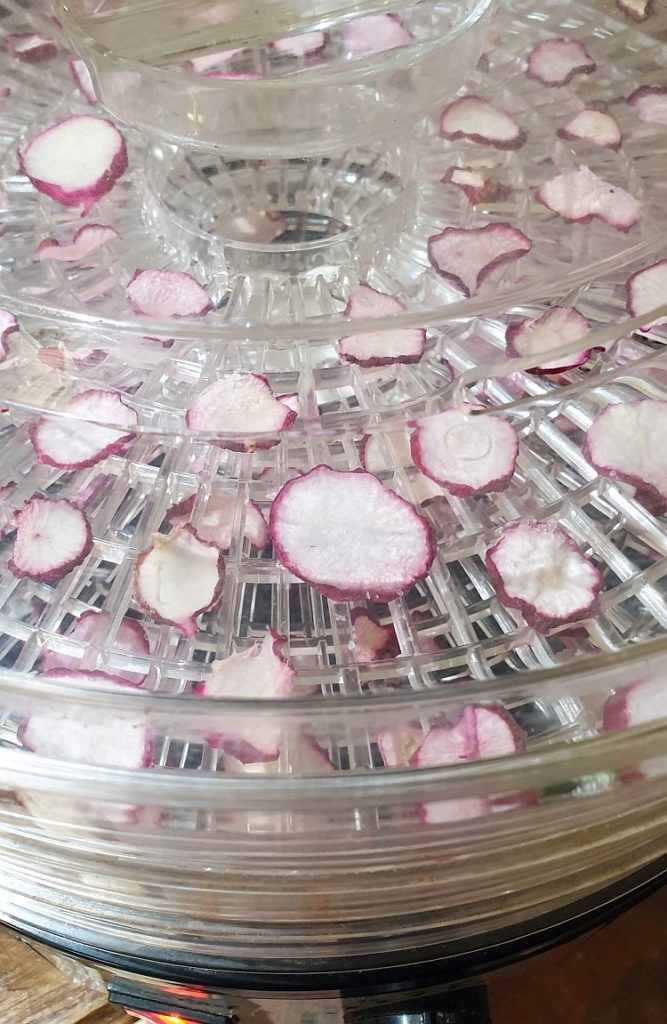
To make dehydrated radishes, place the slices on dehydrator trays or if using the oven, on a lined baking tray. Keep the slices close together but separated. Sprinkle a little salt or other spices over them if you like (this is optional- plain radishes are fine too). Set the dehydrator to 50C (125F) and it will take around 9 hours to create crispy, tasty dehydrated radishes. An oven will take a similar time, but its lowest temperature setting may be higher than what you need. If so, crack the door open a little during dehydration.
Freezing Radishes
Frozen radishes are just as good and easy to use as any other frozen vegetable. You can use them as you do any other frozen product, i.e. in stews, soups, stir-fries, etc. Freezing radishes is an easy process.

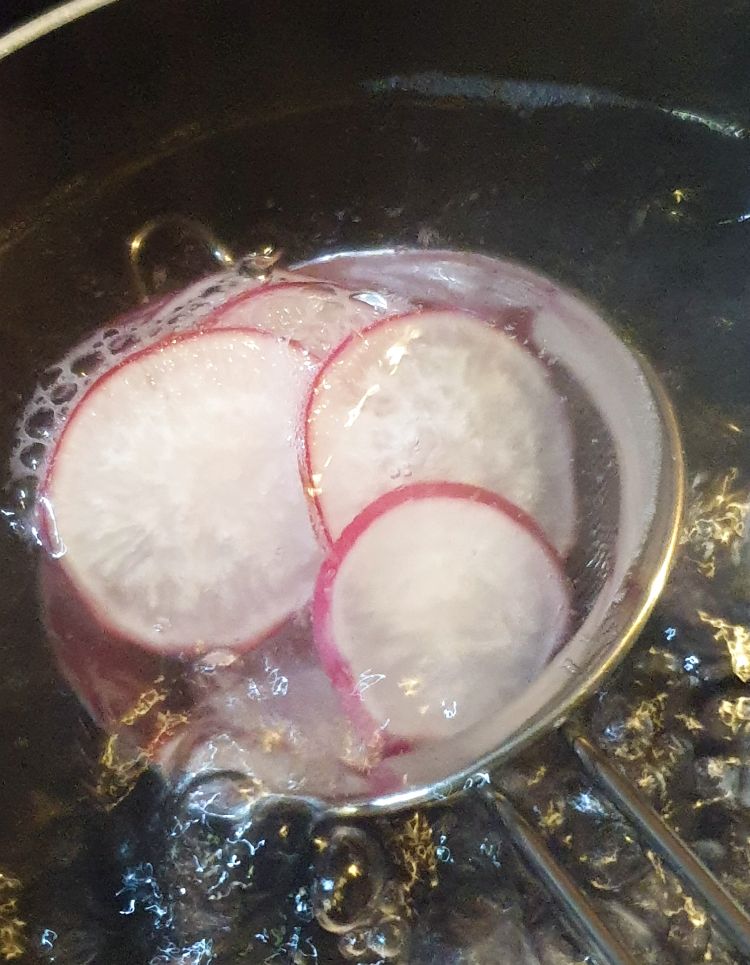

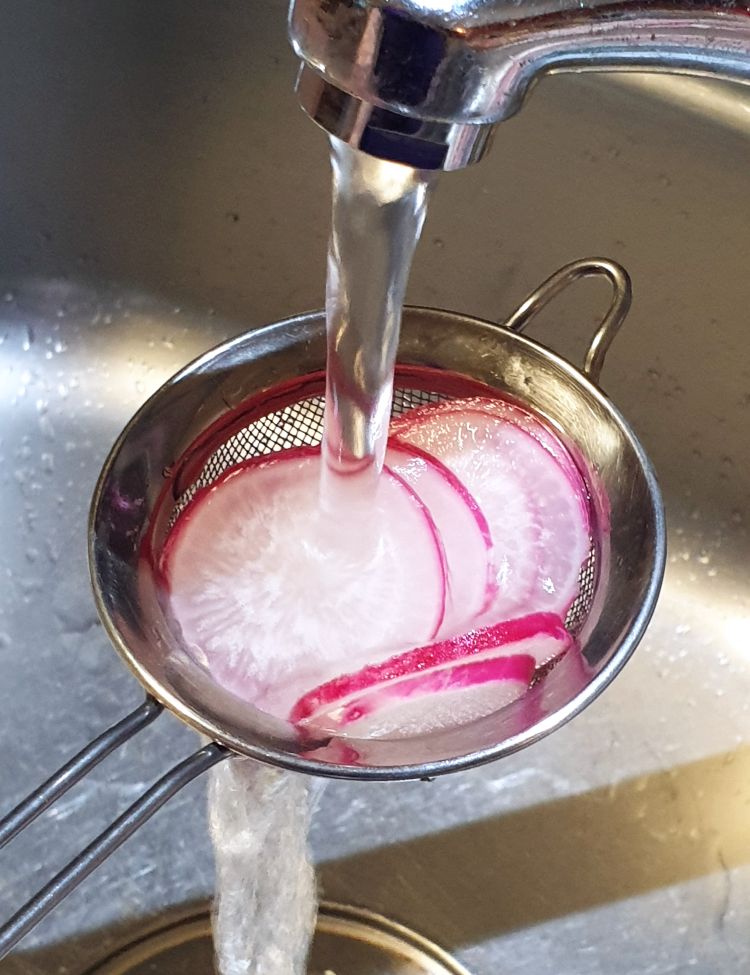

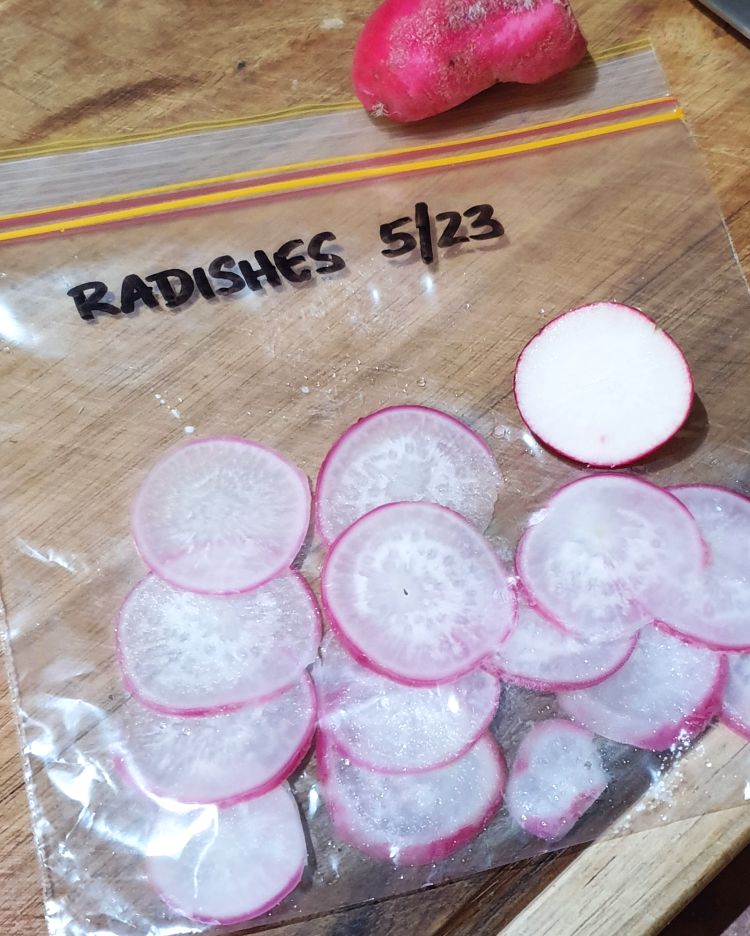
Simply blanch the radish slices briefly in boiling water then run them under cold water to stop the cooking process. Let them drain, then place in a labelled bag and put them in the freezer.
Pickled Radishes
Pickled vegetables are such a delightful ingredient. They spice up sandwiches, salads and stews, plus make a colourful and enticing addition to cheese boards & grazing platters. This recipe (full details below) is for quick fridge pickles, and is not suited to long-term storage. Unopened in the fridge, these will last up to 4 weeks. Once opened, use within 1-2 weeks and keep refrigerated.

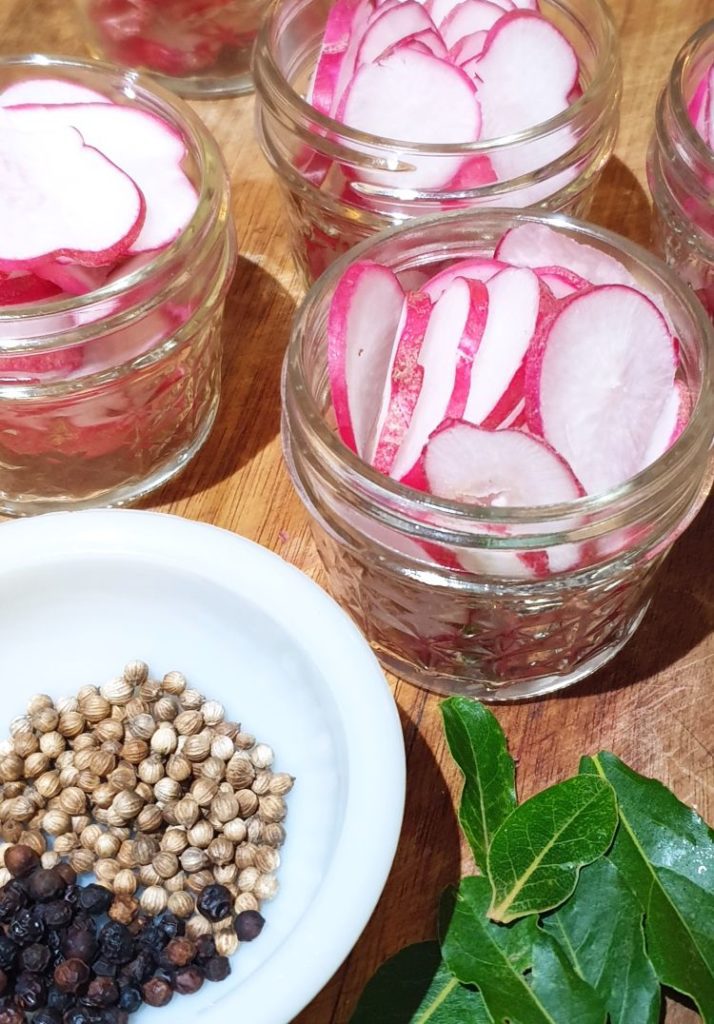

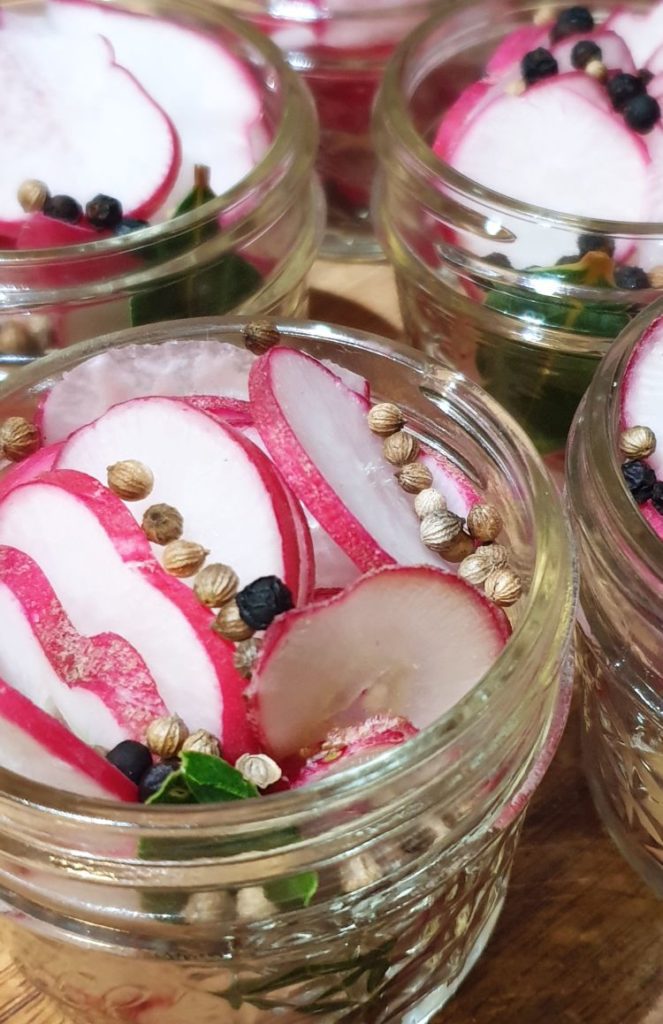
Start by placing your radish slices into sterilised jars. Then add the peppercorns, mustard seeds and bay leaves.

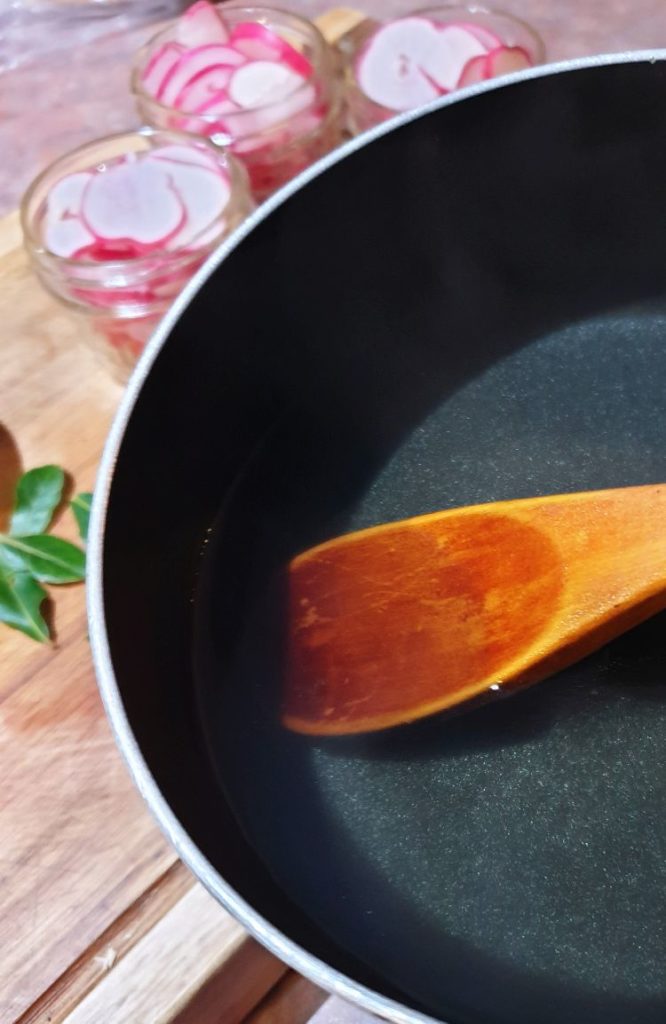

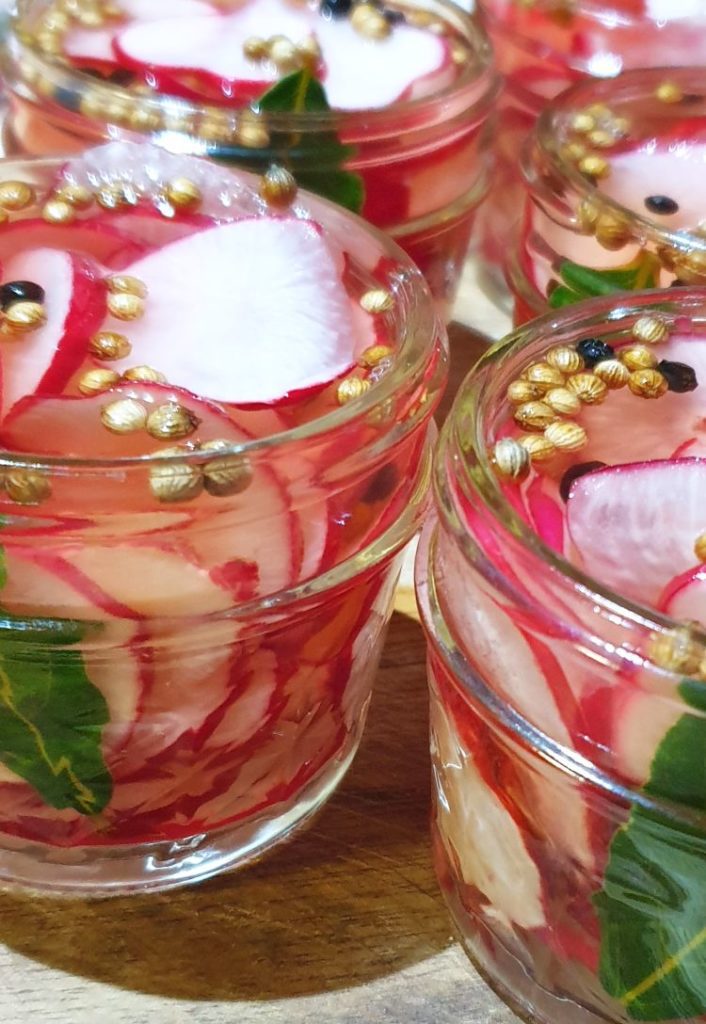
Make the pickling liquid by bringing the water, vinegar, sugar and salt to a boil- this will only take a few minutes. When it’s ready to use, the liquid should look clear, as all the salt and sugar will have dissolved. Pour the liquid over the radishes.

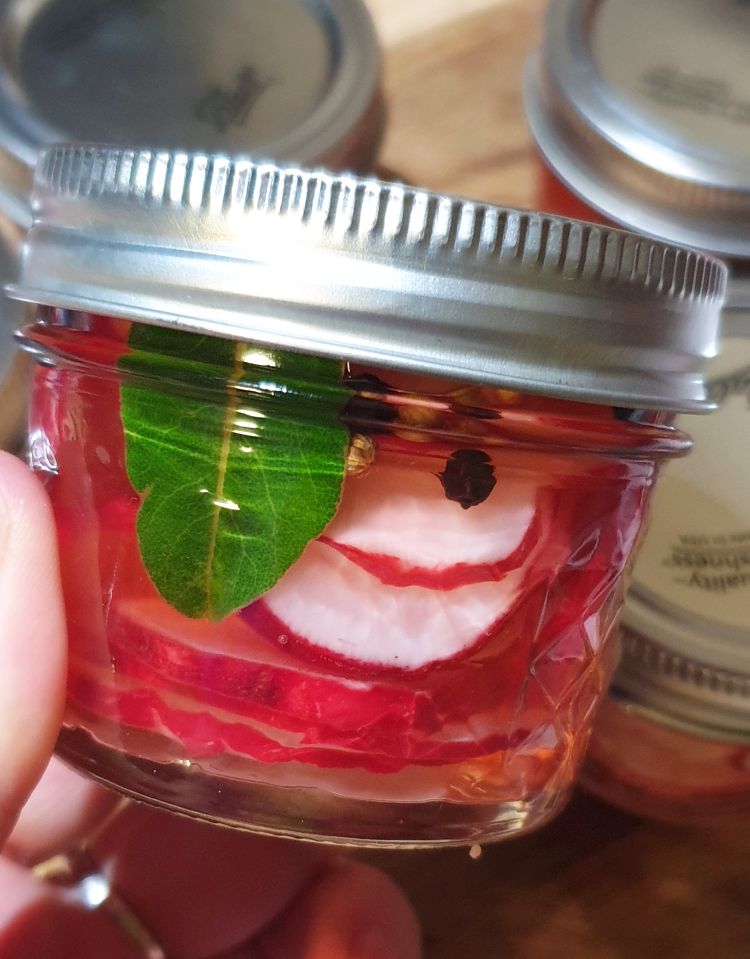
Seal the jars and allow to cool. Once cooled, place jars in the fridge.
Pickled Radishes Ingredients
- 15 large radishes
- 5-6 small or 2-3 large preserving jars
- 1 cup white vinegar
- 1 cup water
- 2 tablespoons sugar
- 1 tablespoon salt
- 1 tablespoon whole black peppercorns
- 1 tablespoon mustard seeds
- small handful of bay leaves (fresh or dried)

